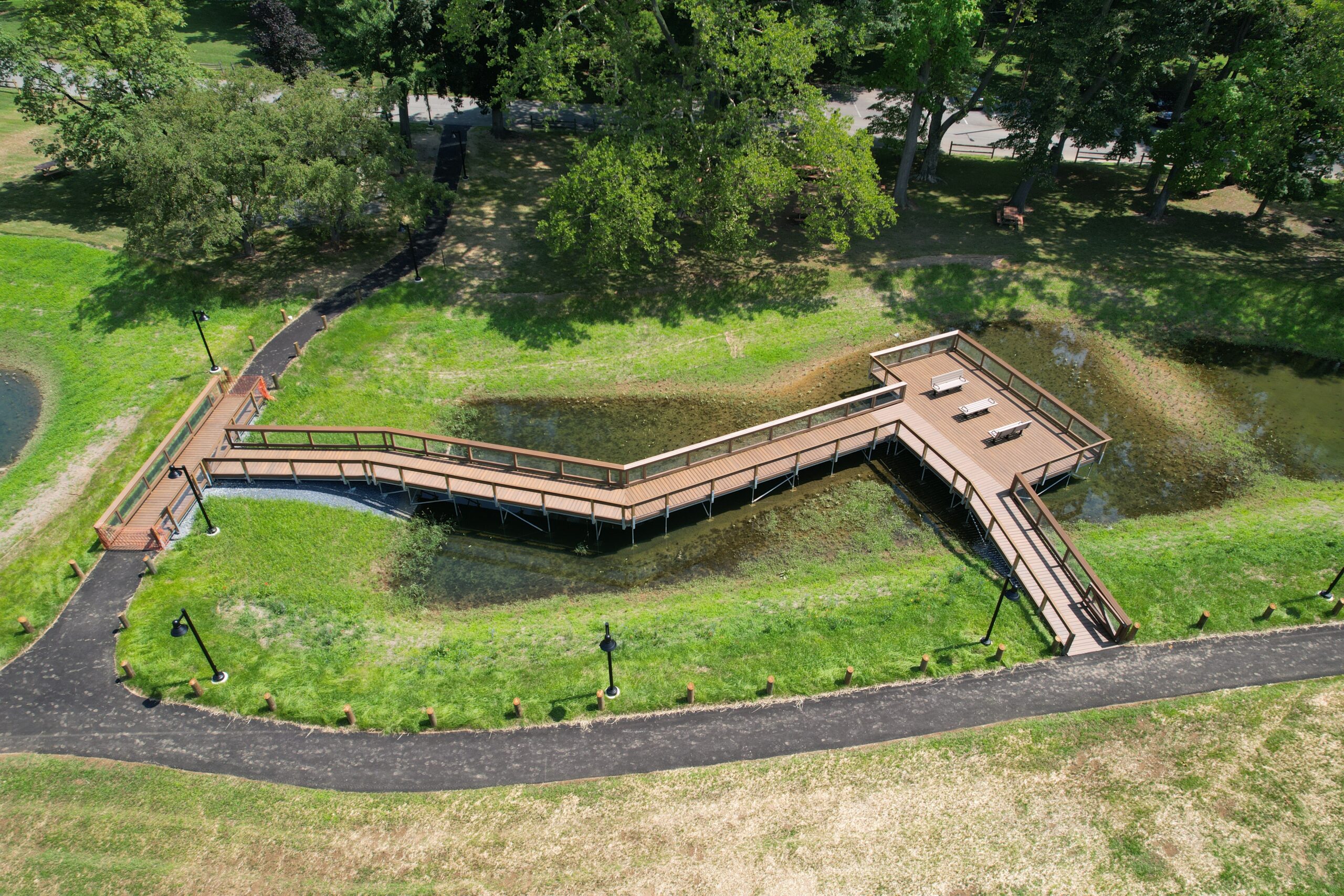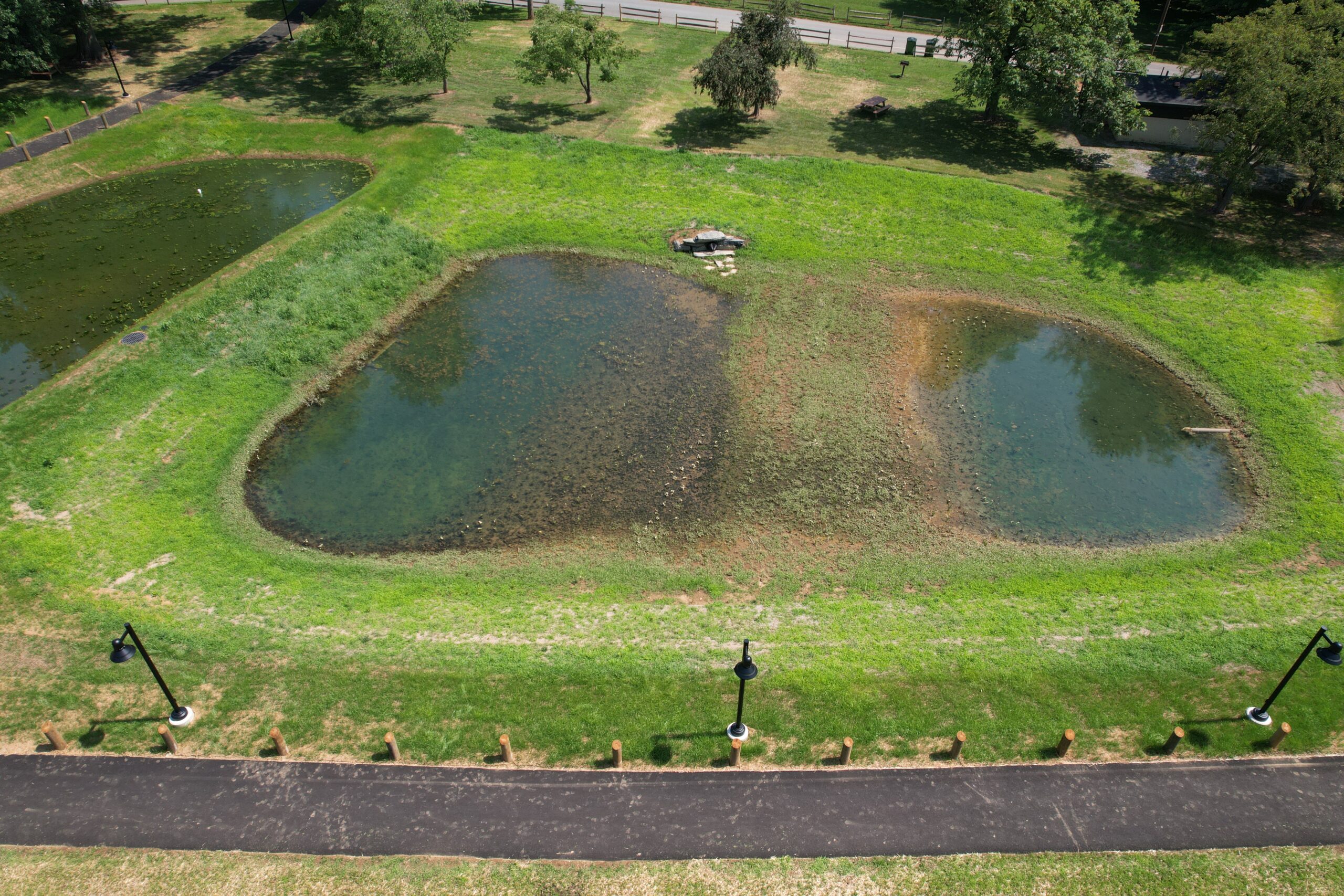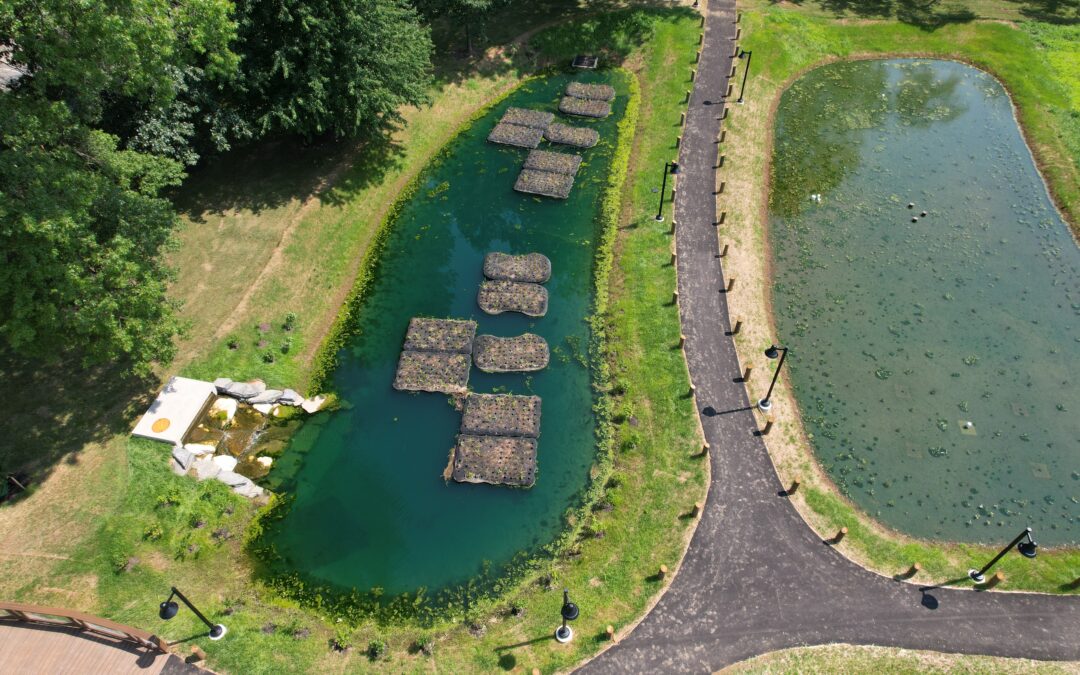Case Study: Long’s Park
Long’s Park, located on the northwest edge of Lancaster City, is a popular destination for local residents and tourists alike. Owned and operated by the city, it is a total of 80 acres including a petting zoo, pavilions, ball fields, and the three-acre Long’s Pond. The park also hosts two renowned events that draw thousands of visitors each year: the Summer Music Series and the Labor Day weekend Art Festival.
As a company who takes pride in serving our community, Flyway Excavating was thrilled to play a role in not only improving the water quality at Long’s Park, but also adding to its recreational opportunities and natural beauty.
Project Goals
In 2023, Flyway Excavating took part in the Long’s Park Water Quality Improvement Project, developed to satisfy elements of Lancaster City’s 2018–2023 Chesapeake Bay Pollutant Reduction Plan and its municipal separate storm water system (MS4) requirements. The project was designed to capture and treat stormwater from neighboring Route 30, Long’s Pond, and Long’s Park itself through the creation of a natural treatment system. The system would aim to reduce nutrient and sediment loading to the Little Conestoga Creek Watershed in the Lower Susquehanna River Basin. The reductions from implementing this system would, in turn, help the city meet its pollution reduction requirements for its MS4 permit and improve the quality of water flowing to the Chesapeake Bay.
What Is a Natural Treatment System?
A natural treatment system removes contaminants from stormwater by using natural elements, with minimal dependence on mechanical components. Contaminants are removed mainly through solids settling, metal adsorption and precipitation, microbial transformation to gaseous compounds, and plant uptake and burial.
The natural treatment system in the Long’s Park project needed to balance five goals:
- Maximize the volume of stormwater captured from Route 30
- Maximize water flow into Long’s Pond to improve its flushing rate and water quality
- Maximize phosphorus removal to improve the water quality of Long’s Pond and to reduce the nutrient loads going downstream
- Create a sequence of treatment units to improve water quality and reduce loads of total suspended solids (TSS)
The system designed in response is a wetlands area that includes a series of treatment units: a forebay with floating wetland islands, an iron-enhanced sand filter, two constructed marshes, and a pump station that conveys water from Long’s Pond back to the forebay and keeps the water treatment cycle going.
Flyway’s Involvement
The city of Lancaster engaged Flyway to construct this new wetlands area in Long’s Park. Between February and July 2023, we built the forebay, sand filter, two marshes, and pump station, as well as all-weather walking trails, pedestrian bridges, and a boardwalk with a viewing platform and seating.
The forebay, a 4.5-foot-deep basin, is the first part of the system to receive stormwater runoff. It helps to remove sediment before the water flows into the iron-enhanced sand filter. As the name suggests, this 3-foot-deep pond is filled with sand enhanced with iron. This draws phosphorous and nitrogen from the water, reducing nutrient pollution. From here, the water travels into the upper and lower marshes, where sediment and nutrients continue to be filtered out by native vegetation. The stormwater then flows from the marshes into Long’s Pond, and the pump station pumps the water back to the forebay.
Pipes connect each part of this natural treatment system, but Flyway also built spillways between them. These are designed to handle heavy rains and other high-water events, allowing water to flow downhill between the treatment units when the connecting pipes are overwhelmed.
In addition to water quality, this project also benefits the biodiversity of Long’s Park. Flyway added native wetland vegetation to the floating islands in the forebay, as well as the upper and lower marsh areas. The islands are an ideal habitat for waterfowl, wading birds, and aquatic wildlife like frogs and turtles to find food, build nests, and simply rest. Within the upper and lower marshes, the wetland vegetation creates a welcoming habitat for birds, turtles, fish, and pollinators.
Flyway also constructed walking paths around and through much of the wetlands area, as well as a boardwalk between the upper and lower marshes. These allow the public to enjoy the wildlife and natural beauty of the wetlands up close.
The Result
The Long’s Park Water Quality Improvement Project is expected to result in a 50% reduction in phosphorus, a 32% reduction in nitrogen, and a 95% reduction in sediment loading to the Little Conestoga Creek Watershed in the Lower Susquehanna River Basin, improving its water quality and, ultimately, that of the Chesapeake Bay.
Additionally, the water quality of Long’s Pond is expected to improve. The pond has suffered from murky green water in recent years due to a high nutrient load and algae overgrowth, problems that the increased flow of treated water should help to mitigate.
The Long’s Park project also provides unique educational and recreational opportunities for the public. Signage added by the city explains the water quality engineering behind it, as well as its impact on wildlife. Together with the walking paths and viewing platform, the wetlands are a new, unique, and engaging experience for visitors to Long’s Park.


